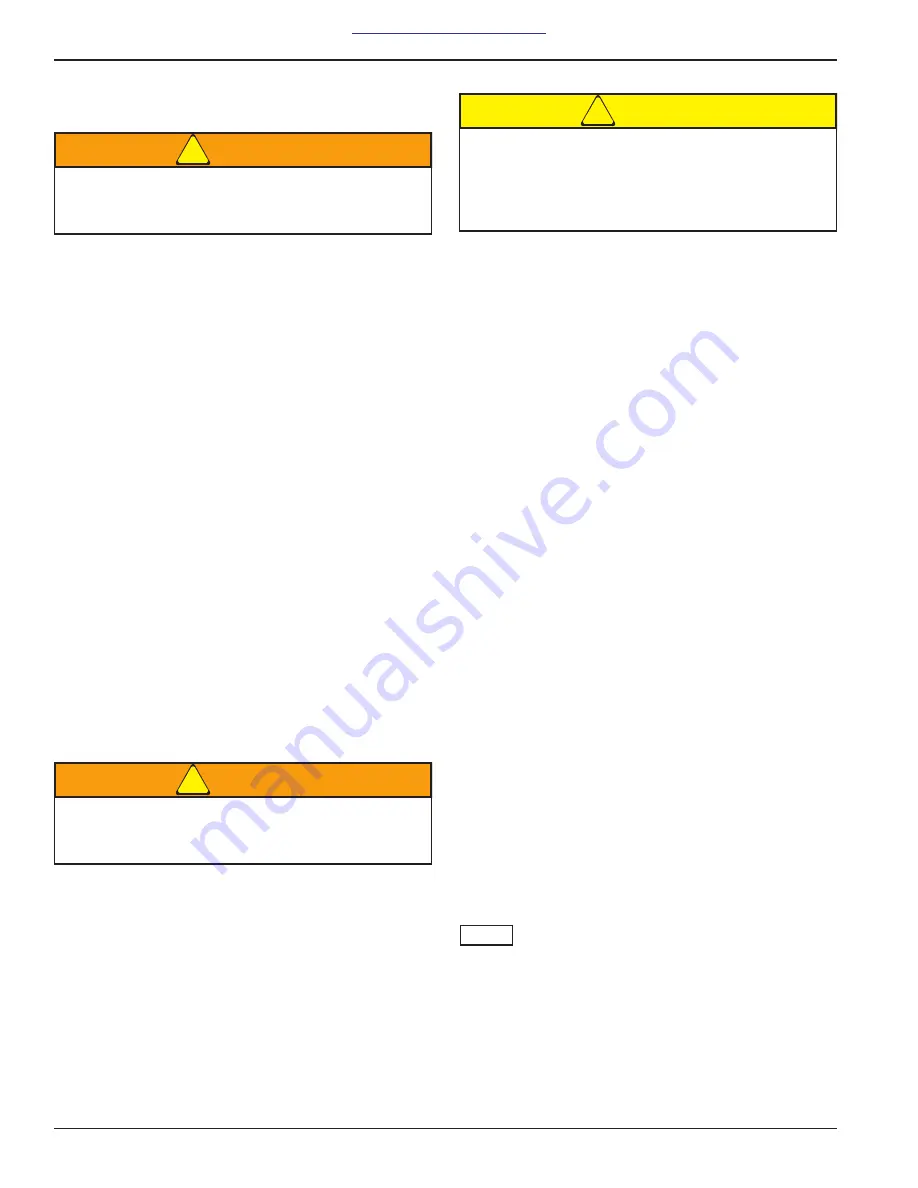
4-20
F-1044-0719
MAINTENANCE AND LUBRICATION
Hub and Drum Maintenance
WARNING
1.
Clean and inspect the brake drums whenever relining
the brakes. To be suitable for further service, the
brake drum should pass the following checks.
a.
The brake surface should be free of scoring,
excessive heat checks and cracks.
b.
The brake surface diameter should be within the
maximum diameter cast or stamped on the drum.
c.
The mounting holes and pilot must be round and
true.
d.
The mounting surface must be clean and flat.
2.
It may be necessary to turn or resurface the braking
surface to remove small heat checks or other surface
defects resulting from normal use.
a.
The maximum diameter cast into the back plate
portion of the brake drum is the maximum
diameter or discard diameter to which the brake
drum may be turned or worn and still be usable.
If any portion of the brake surface exceeds the
maximum diameter it must be discarded. The
maximum is .120 over the nominal new diameter
unless stated otherwise on the casting. The
maximum diameter cast into the brake drum
supersedes all published information.
b.
When resurfacing a drum, allow at least 0.040
inches under the maximum diameter for
additional wear.
WARNING
3.
Replacement of the brake drum is required if any of
the following conditions exist:
a.
The brake drum is cracked.
b.
The brake surface is heat checked, grooved or
worn beyond the rebore limit or the maximum
diameter.
c.
The back plate is cracked.
d.
The bolt holes are elongated.
e.
The brake drum has been severely overheated.
f.
The brake drum is out-of-round.
CAUTION
4.
Replace the hub and drum as follows:
(
a.
Remove the brake drum. It may be necessary to
release the slack adjuster.
b.
Remove hub cap and catch lubricant in a pan.
c.
Remove outer spindle nut, spindle locking
washer, inner spindle nut, and bearing. Remove
hub from axle.
d.
Using an appropriate driver, remove inner
bearing cone, and seal.
e.
Using an appropriate driver, remove bearing
cups from hub.
f.
Check that the hub cavity is clean. If the hub is to
be reused, clean it thoroughly.
g.
Insert bearing cups into the hub.
h.
Clean the mounting surfaces with a good grade
commercial cleaner and soft rag. Dry all
component parts with a clean, absorbent cloth or
paper. Lubricant will not adhere to surfaces wet
with solvent.
i.
Place the drum over the hub and brake shoes
being careful not to damage the threads on the
studs
Make sure the drum
seats flat against the hub flange and mates
properly with the hub pilot. There should be no
interference between the brake drum pilot
chamfer and the corner radius on the hub. If
interference exists, the hub will not be able to
function properly.
j.
Install inner bearing, cone, and seal.
k.
If studs are marked “R” or “L”, right hand ®) hubs
should be installed on the curbside of the vehicle,
left hand (L) hubs should be installed on the
driver side.
NOTE
Do not mix new cups with old cones or new cones with
old cups.
Failure to replace faulty brake drums will result in
an unreliable braking system, and may lead to an
accident.
Turning a brake drum beyond 0.040 inches under
the maximum diameter will result in a weaker
brake drum and may result in an accident.
Replace brake drums in pairs to achieve the same
braking power on both wheels and maintain an
even braking load on the axle. Failure to do this
may significantly reduce the performance,
service life, and/or safety of your vehicle.















































